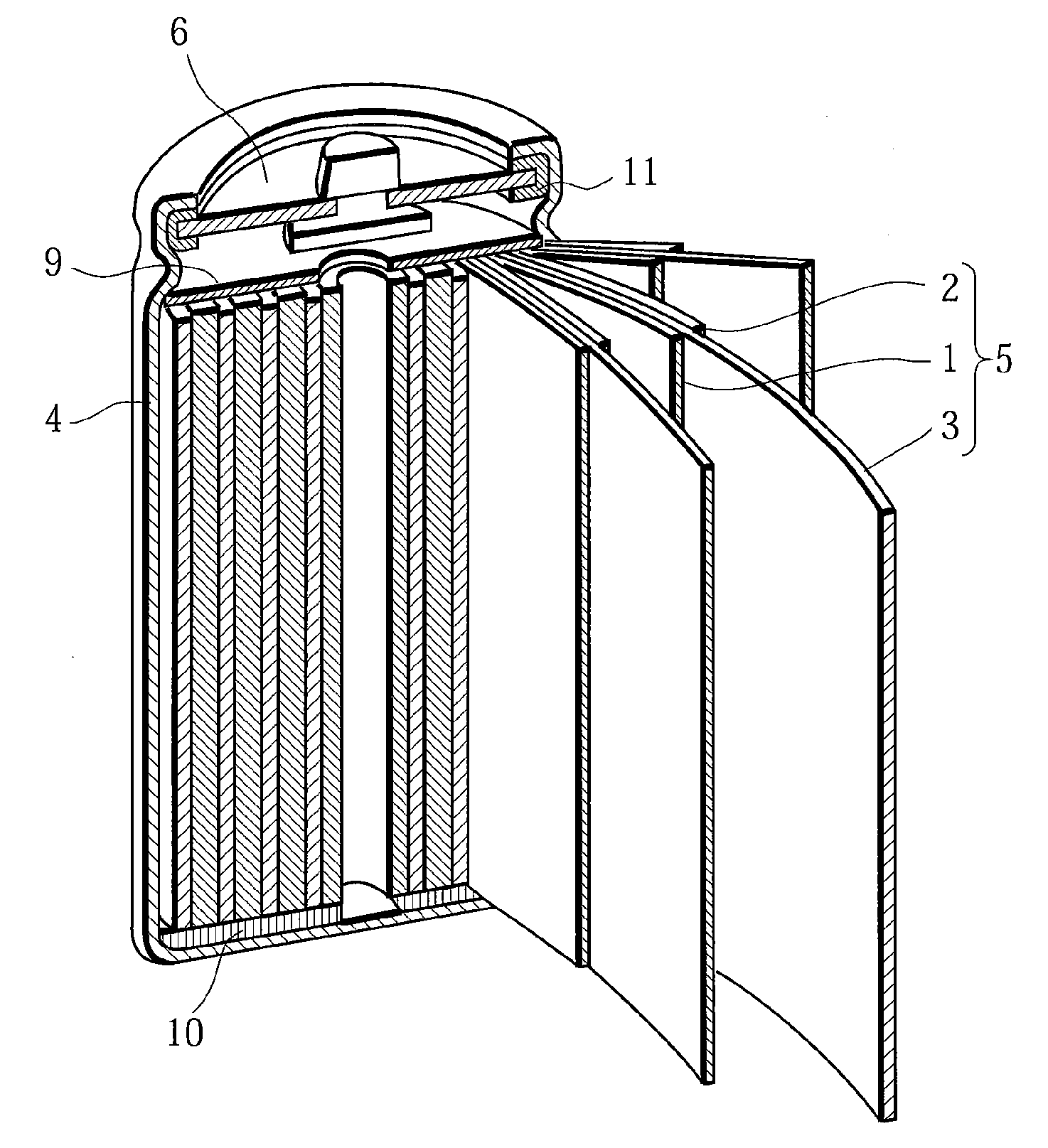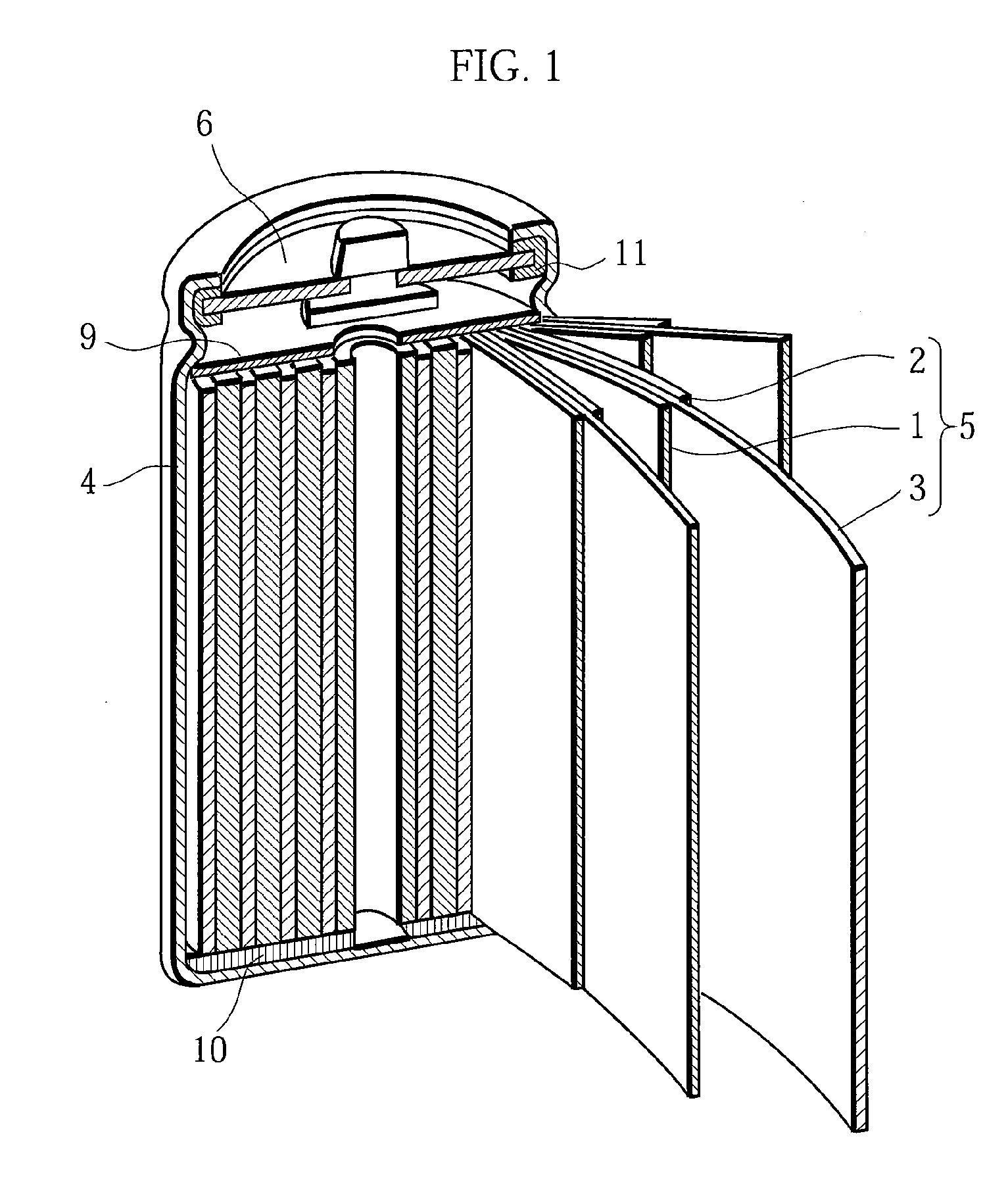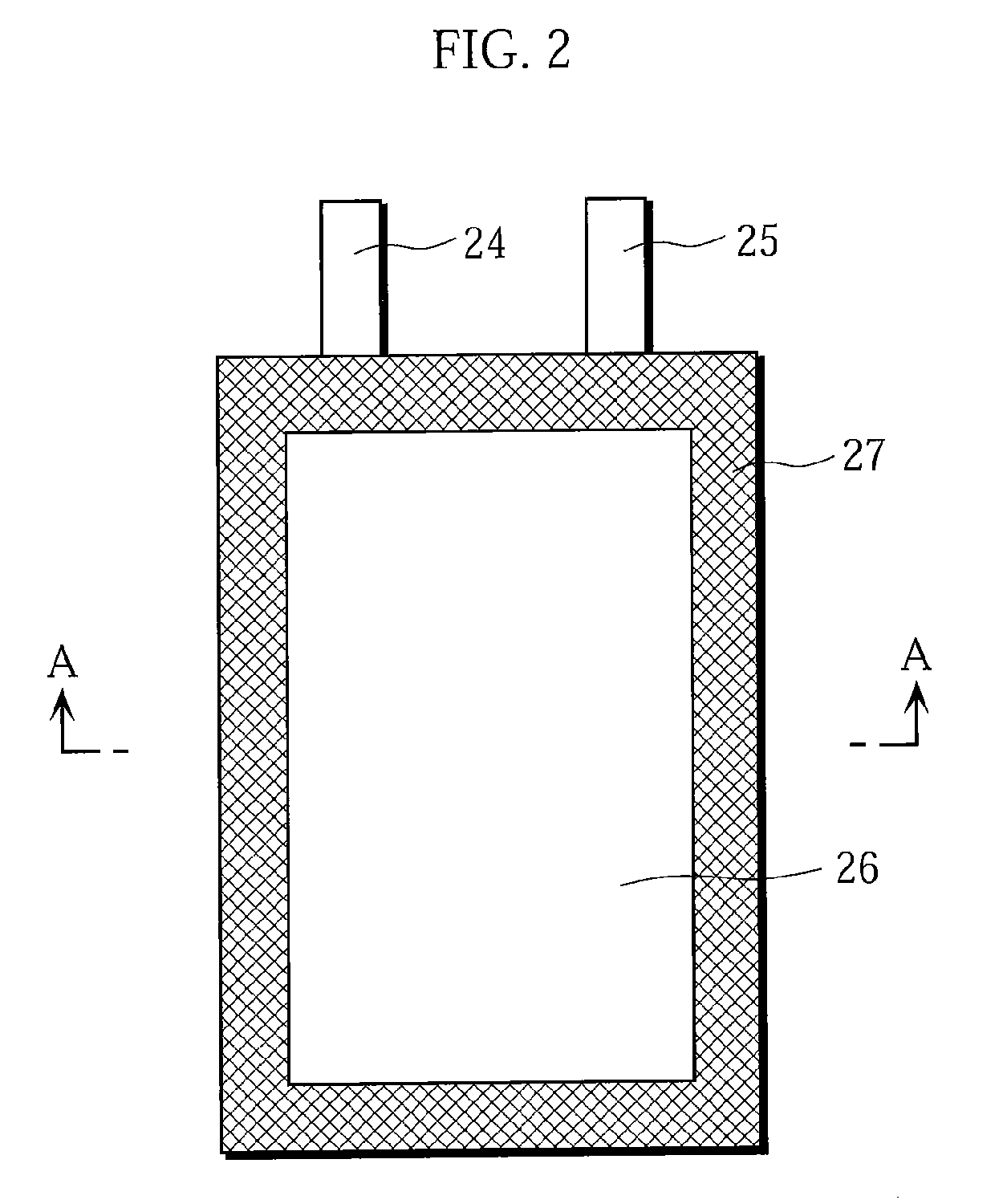[0009]However, even when the performance of the electrode itself improves, it is still difficult to fully
exploit the advantageous effects of the electrode because there are many limitations in actual battery systems. Specifically, the details are as follows.
[0010]In actual batteries, in order to achieve
high energy density, a spirally-wound electrode
assembly, obtained by winding the positive electrode and the negative electrode so as to face each other together with a separator interposed therebetween, is accommodated in a cylindrical or prismatic container. In the battery with such a construction, the mechanical strengths of the positive and negative electrode current collectors and the separator are high (especially the one which uses a
copper alloy as the negative electrode current collector to improve the negative electrode has a very high
mechanical strength), so the spirally-wound electrode
assembly itself does not easily deform. Therefore, when using the negative electrode active material that expands in volume due to
occlusion of lithium as described above, the stress associated with the volumetric change of the negative electrode active material is applied entirely to the positive and negative electrodes and the separator, which are within the spirally-wound electrode assembly. This may result in breakage of the positive and negative electrodes resulting from the extension of the electrodes, squeeze-out of the
electrolyte solution from the positive and negative electrode mixture
layers because of the crushing of the mixture layers, and clogging of the separator because of the crushing of the separator. Consequently, the
electron conductivity and the lithium
ion conductivity in the battery deteriorate, causing various problems, such as deterioration of the charge-discharge performance.
[0011]In the cylindrical lithium secondary battery in particular, deformation of the spirally-wound electrode assembly is more difficult to occur than in the prismatic lithium secondary battery. In the prismatic lithium secondary battery, the horizontal cross-sectional shape of the spirally-wound electrode assembly comprises a linear portion and curved portions (semicircular portions). Therefore, when stress is applied thereto, the linear portion can bend easily although the curved portions do not easily deform, and a certain degree of deformation is possible. On the other hand, in the cylindrical lithium secondary battery, the horizontal cross-sectional shape of the spirally-wound electrode assembly is substantially circular, so there is no part in which deformation easily occurs. As a consequence, the adverse effects caused by the volumetric expansion of the negative electrode active material originating from the lithium
occlusion arise more noticeably in the cylindrical lithium secondary battery. When the negative electrode active material deteriorates and the expansion develops as the charge-discharge cycles proceeds, the adverse effects become more serious, and further deterioration of the charge-discharge performance occurs.
[0012]Accordingly, it is a principal object of the present invention to provide a lithium secondary battery that achieves excellent charge-discharge cycle performance by improving the battery structure, the lithium secondary battery being a cylindrical lithium secondary battery employing as a negative electrode active material containing silicon and / or a
silicon alloy, which causes volumetric expansion in occluding lithium. It is also an object of the invention to provide a method of manufacturing such a lithium secondary battery.BRIEF SUMMARY OF THE INVENTION
[0013]In order to accomplish the foregoing and other objects, the present invention provides a cylindrical lithium secondary battery comprising: a battery case; a non-
aqueous electrolyte; and a spirally-wound electrode assembly accommodated in the battery case, the spirally-wound electrode assembly comprising a positive electrode, a negative electrode, and a separator interposed between the positive and negative electrodes, the positive electrode and the negative electrode being disposed facing each other across the separator, the positive electrode having a positive electrode current collector made of a conductive
metal foil and a positive electrode mixture layer disposed on a surface of the positive electrode current collector, the positive electrode mixture layer comprising a positive electrode binder and a positive electrode active material containing a layered lithium-
transition metal composite oxide represented by the
chemical formula LiaNibCocMndAleO2 where 0≦a≦1.1, b+c+d+e=1, 0≦b≦1, 0≦c≦1, 0≦d<1, and 0<e≦0.1, wherein the amount of the positive electrode active material is 50 mg or less per 1 cm2 of the positive electrode, and the negative electrode having a negative electrode current collector made of a conductive
metal foil and a negative electrode mixture layer disposed on a surface of the negative electrode current collector, the negative electrode mixture layer comprising a negative electrode binder and a negative electrode active material containing silicon particles and / or silicon
alloy particles, wherein the average particle size of the silicon particles or the silicon alloy particles is from 5 μm to 15 μm, and wherein and the theoretical electrical capacity ratio of the negative electrode to the positive electrode is 1.2 or greater.
[0014]The present invention makes available a lithium secondary battery that achieves excellent charge-discharge cycle performance and a method of manufacturing the battery even when employing as a negative electrode active material containing silicon and / or a silicon alloy, which causes volumetric expansion when occluding lithium.
 Login to View More
Login to View More 


